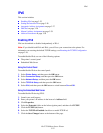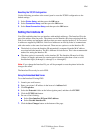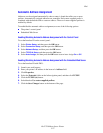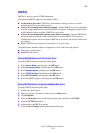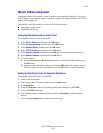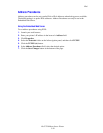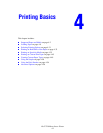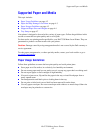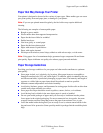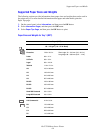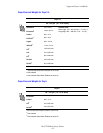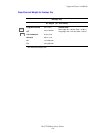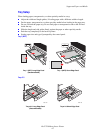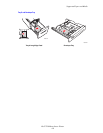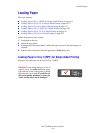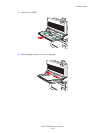Supported Paper and Media
Dell 7330 Mono Laser Printer
4-3
Paper that May Damage Your Printer
Your printer is designed to be used with a variety of paper types. Other media types can cause
poor print quality, increased paper jams, or damage to your printer.
Note: If you use pre-printed material regularly, the feed rollers may require additional
cleaning.
The following are examples of unacceptable paper:
■ Rough or porous media
■ Plastic media other than supported transparencies
■ Paper that has been folded or wrinkled
■ Padded envelopes
■ Non-laser glossy or coated paper
■ Paper that has been photocopied
■ Paper with cutouts or perforations
■ Paper with staples inserted
■ Envelopes with windows, metal clasps, adhesives with release strips, or side seams
Note: Using paper free of contaminants helps guarantee longer component life and better
print quality. Paper with better cut quality also reduces paper jams and misfeeds.
Paper Storage Guidelines
Providing good storage conditions for your paper and other media contributes to optimum
print quality.
■ Store paper in dark, cool, relatively dry locations. Most paper items are susceptible to
damage from ultraviolet (UV) and visible light. UV radiation, which is emitted by the sun
and fluorescent bulbs, is particularly damaging to paper items. The intensity and length of
exposure to visible light on paper items should be reduced as much as possible.
■ Maintain constant temperatures and relative humidity.
■ Avoid attics, kitchens, garages, and basements for storing paper. Inside walls are drier than
outside walls where moisture can collect.
■ Store paper flat. Paper should be stored on pallets, cartons, shelves, or in cabinets.
■ Avoid having food or drinks in the area where paper is stored or handled.
■ Do not open sealed packages of paper until you are ready to load them into the printer.
Leave paper in the original packaging. For most commercial cut-size grades, the ream
wrapper contains an inner lining that protects the paper from moisture loss or gain.
■ Leave the media inside the bag until you are ready to use it; reinsert unused media in the
bag and reseal it for protection. Some specialty media is packaged inside resealable plastic
bags.



